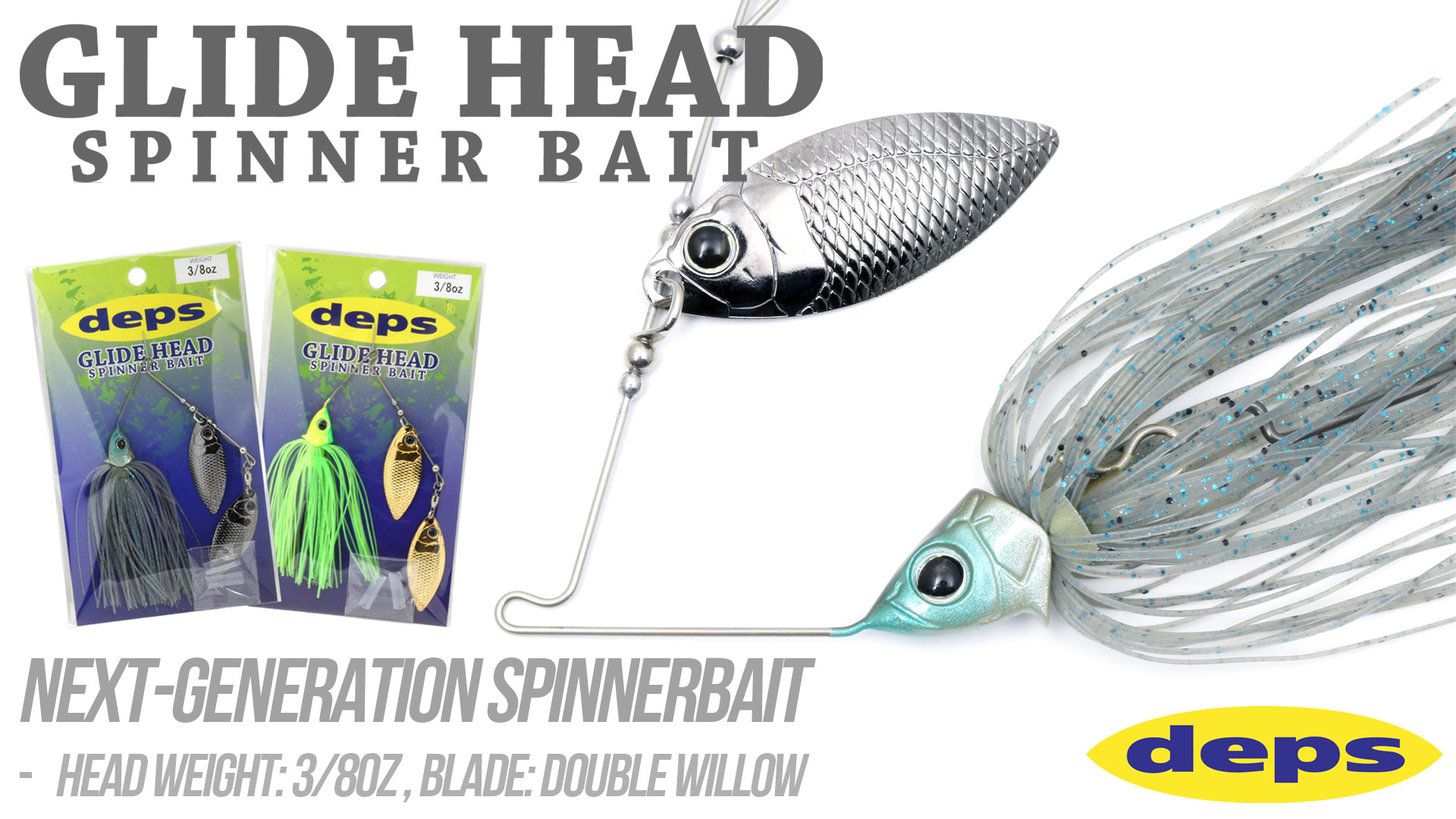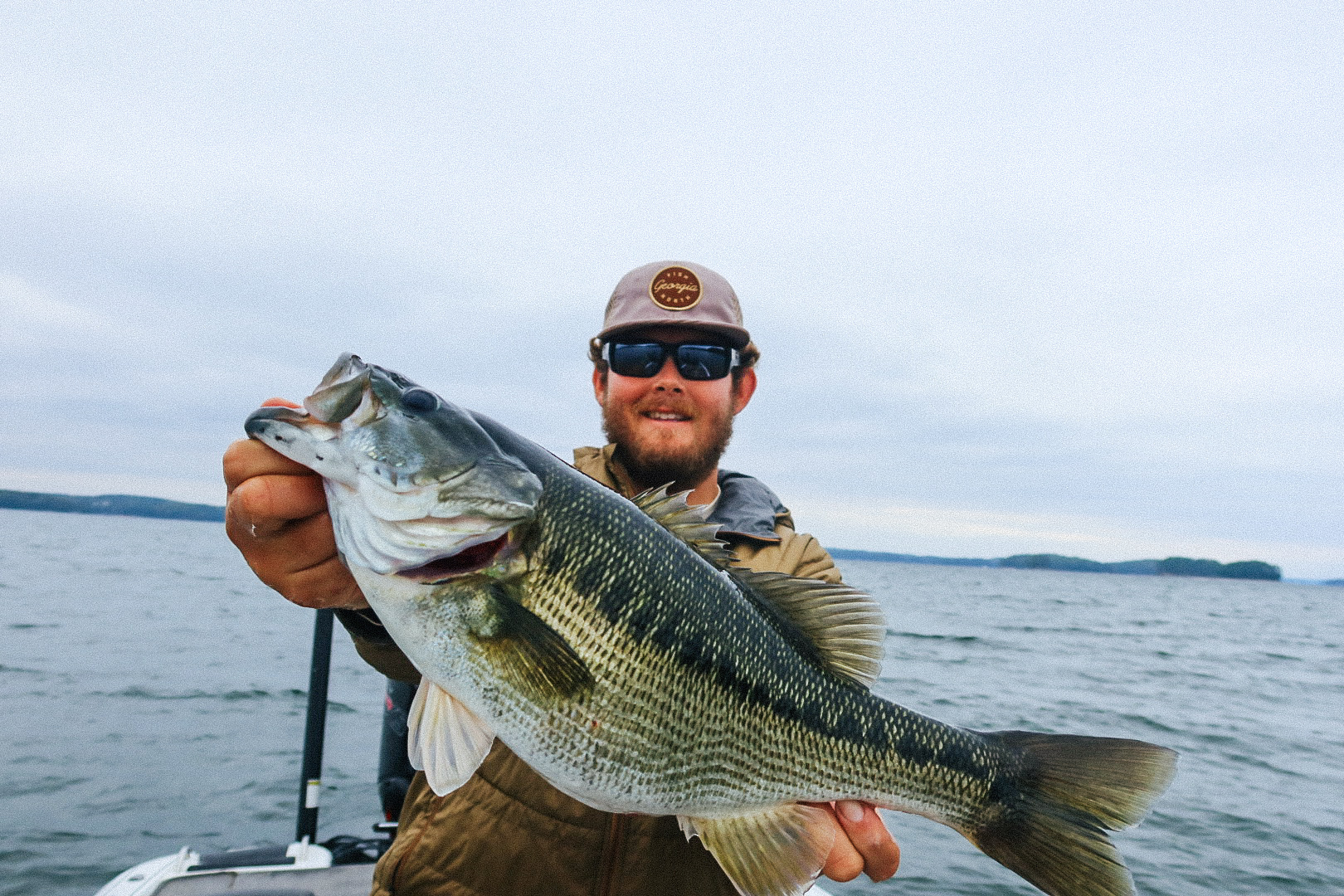“Throughout my years of bass fishing,” says Matt Paino, CEO of Optimum Bait Company in Temecula, California, “I’ve always been told there is no wrong way to fish a worm. I still believe this is true. However, I’ve also learned that certain methods will perform better than others at certain times. One of those stand-out methods is clearly the Zappu wacky jig.”
“This technique – the jig head wacky rig – was first pioneered by Zappu in Japan. Top Zappu bass pro Takuma Hata learned first of this technique during a tournament in Korea. Following that event, Hata broke the news in a feature story in Japan’s Lure Magazine introducing Japanese anglers to the Zappu wacky jig.”
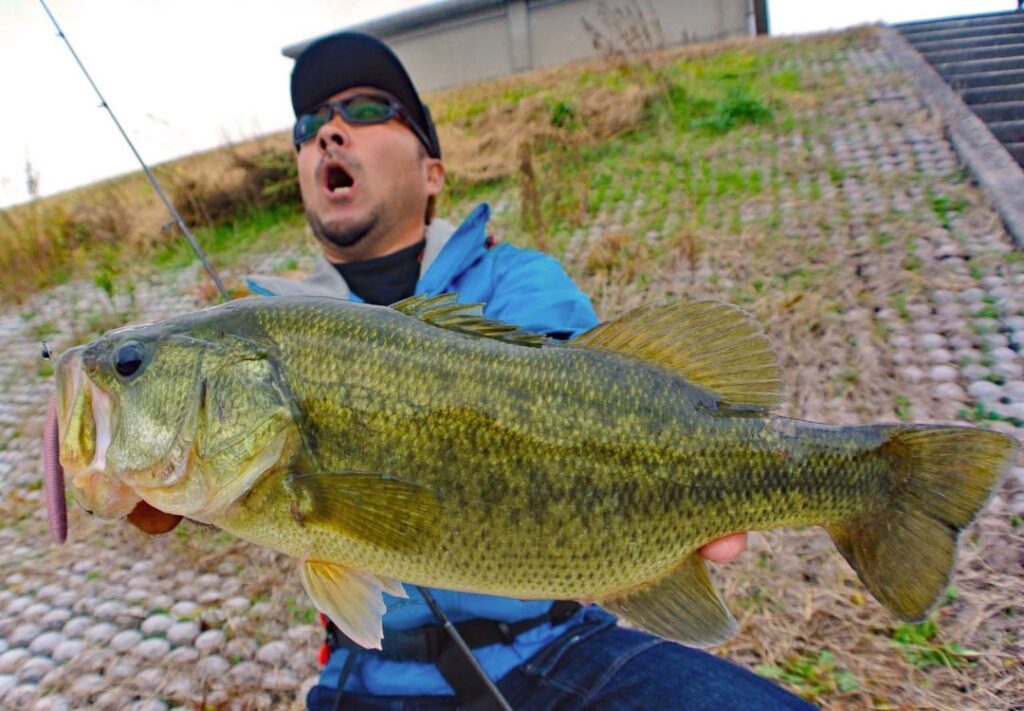
Paino lived in Japan then and recalls, “With the press picking up on the exciting technique, every angler in Japan wanted to try the Zappu wacky jig for him or herself – and for good reason because Japanese anglers have always been avid fans of the ‘weightless wacky rig’ and by taking that lure concept one step further, Zappu pioneered a tactical breakthrough that made perfect sense. It wasn’t long before the Zappu wacky jig had taken Japan by storm.”
Recognizing they had a huge success on their hands, Zappu quickly followed through to introduce the wacky jig to the USA too, through their distributor, Optimum Baits in California.
“Way before anyone else, we did a great job introducing and getting this technique going in the USA. Zappu wacky jig heads have been a staple in my sales since then,” says Matt. “Obviously sales were much better the first two years before everybody and their grandma introduced a version of their own wacky heads. Still, there is always something of value that can only be gotten through the creative process, the original intellectual capital, trying different designs until the right one emerges, long hours of concentrated thought and development until finally achieving the goal. All that goes into conceiving an original lure concept versus secondhand copying it.”
Can’t beat the technical excellence
“What was behind Zappu’s original success and still makes their wacky jig number one today is the technical excellence. It is tungsten, the densest material for superior action and fall rate. The wire guard is titanium, the most bendable yet shape-retentive and long-lasting material. Every bend and measurement of the hook was designed by Zappu expressly for the wacky jig lure concept, for holding the wacky worm properly, for activating the pendulum swing of the head, for falling through the water horizontally and resting upright on bottom.These are constructs that Zappu aspired to and solved in their passion to create the perfect wacky jig,” explains Paino. “On these technical merits – the tungsten, the titanium, and the hook – many other brands fall short.”

Benefits of the Zappu Wacky Jig
“Any angler that tries the Zappu wacky jig intuitively recognizes that this technique is ideal for fishing deeper water and tougher conditions. Areas such as rock piles, drop-offs and other vertical structure points are perfect situations where the Zappu wacky jig will produce handsomely.”
Benefits that Matt says anglers get from using the Zappu wacky jig are:
- You get more distance on the cast
- More accuracy on the cast, especially when windy
- You can fish deeper areas
- The bait falls quicker
- You can keep the bait in contact with the bottom easier
- Most importantly, it creates an irresistible action that looks exactly like a real baitfish squirming in the water.
How to rig worms and baits
The Zappu fishing brand of Japan was instrumental in defining the wacky jig technique, and Zappu found that four weights of wacky jig heads are necessary for this technique – 1/16, 3/32, 1/8 and 3/16 oz sizes.
These are all light weights, but an angler will quickly realize there is a huge difference between them when using them. The way to envision using them is that the 1/8 doubles and 3/16 triples the 1/16 base weight. The size to use can vary based upon the size of the worm and the depth at which it is being fished. Bigger worms and deeper water favor heavier jig sizes and vice versa.
Zappu experimented with different hooks during the design phase and found that a V-shape angled hook best keeps the worm correctly positioned on the hook. For consistency, the same size hook is used on all four weights of wacky jigs, and 1/16, 3/32, 1/8 come equipped with or without superior titanium wire guards for fishing snaggy or open water respectively, plus 3/16 is available without the weed guard, making 7 different models of Zappu wacky jigs.
Reins Swamp Movers
The Reins 4.5″ Swamp Mover and 6.5″ Swamp Mover Magnum are examples of dense, durable worms which excel with the Zappu wacky jig tactic. This stiffer style of worm resists bending and flexing but that resistance causes an equally strong opposing force from the jig weight and gravity working against it, making the jig head swing back and forth even harder to counteract the water resistance of the worm. This style of worm tends to excel with a deadsticking action. The end tips vibrate and swim while the body rocks as it parachutes down to its doom, inciting solid strikes.
When rigging the Swamp Mover or Swamp Mover Magnum, it’s vital that you position the hook correctly by inserting the point of the hook right through or slightly below the middle mold seam of the worm and have it exit on or under the seam on the opposite side from the insertion point. One sweet spot for great action is the end of the smooth egg sac segment. To force the jig head to work and swing the worm even harder, rig with the flat “top” of the Swamp Mover facing downward for maximum water resistance.
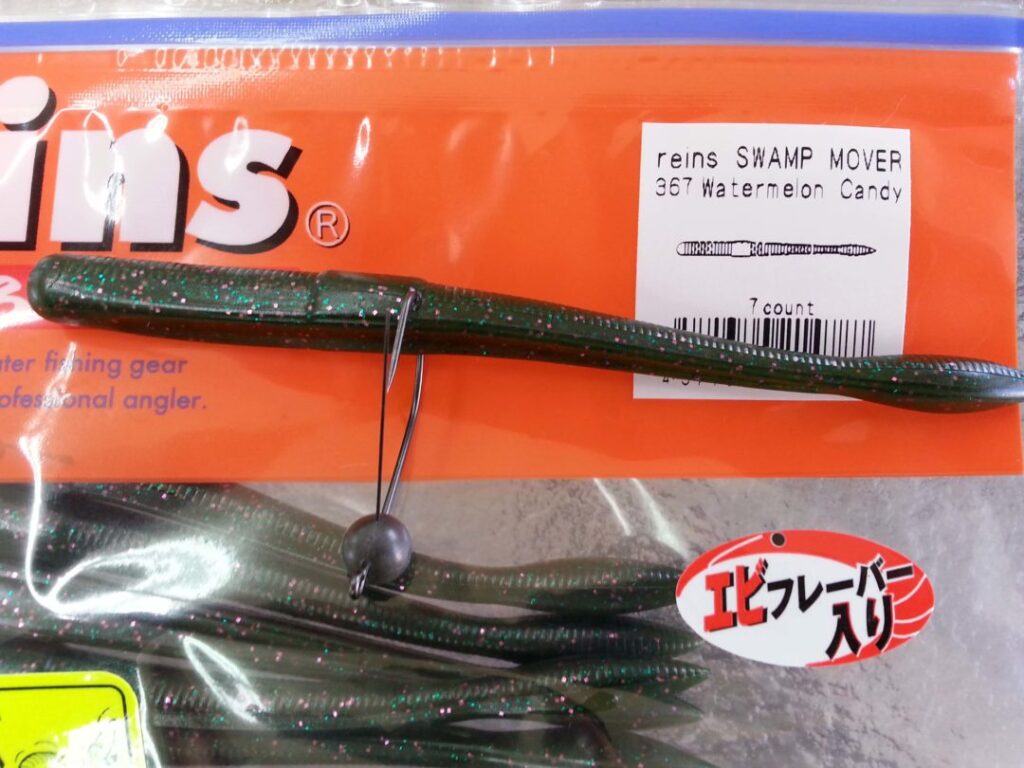
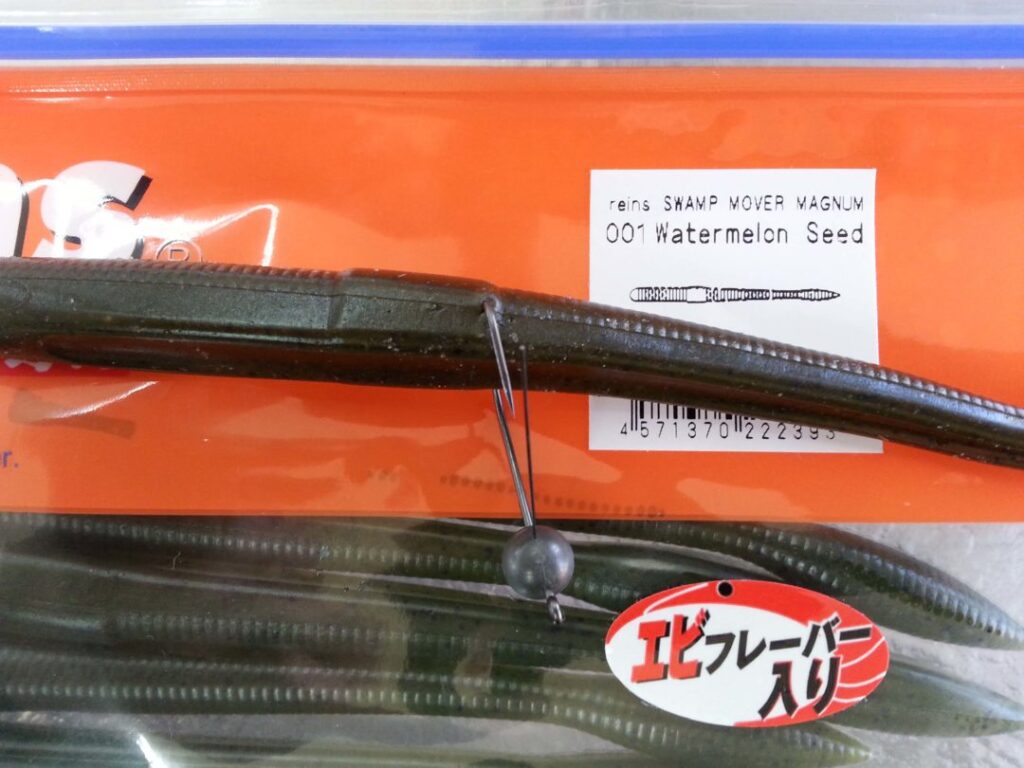
Reins Bubbling Shakers
The Reins 4”, 5″ and 7” Bubbling Shakers are examples of soft, supple worms that cause low water resistance against the effect of gravity pulling the jig head down. This softer style of worm excels with angler-imparted shaking of the rod tip to get the jig head rocking with the worm squirming uncontrollably. This style of worm tends to excel with a fairly constant shaking action. This irregular action has a very appealing, teasing action that bass cannot resist.
When rigging the Bubbling Shaker, insert the point of the hook right through or slightly below the middle mold seam of the worm and have it exit on or under the seam on the opposite side from the insertion point. A sweet spot for great action is after the tenth rib on the 5” and 7” and after the ninth rib on the 4” Bubbling Shaker.
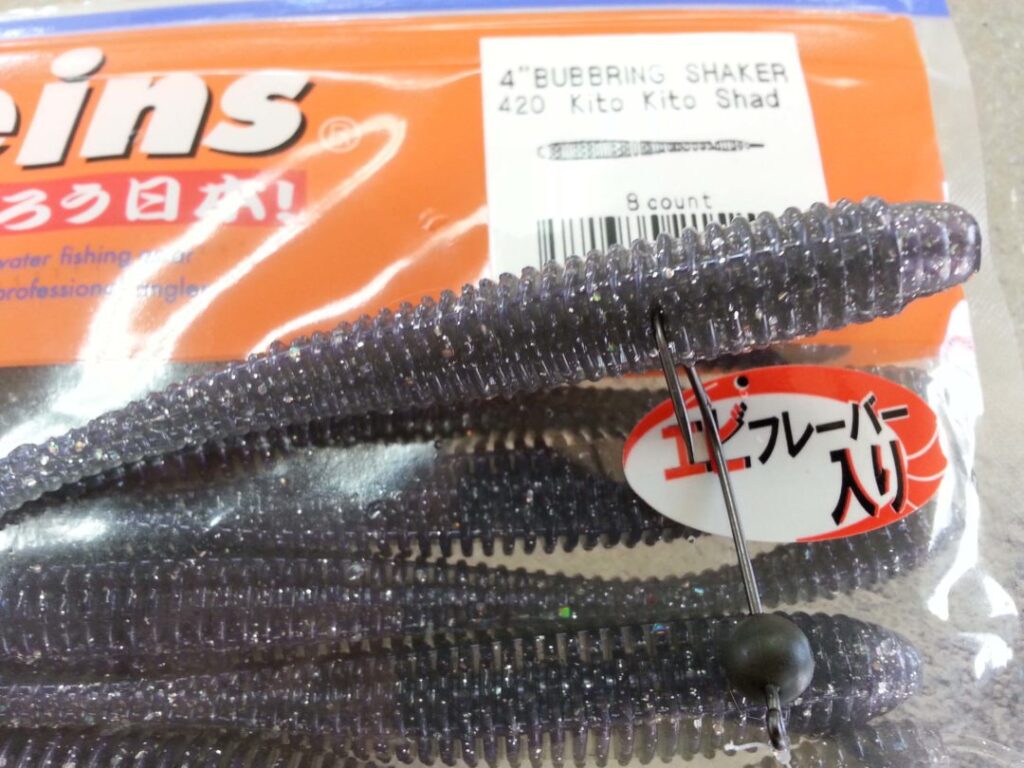
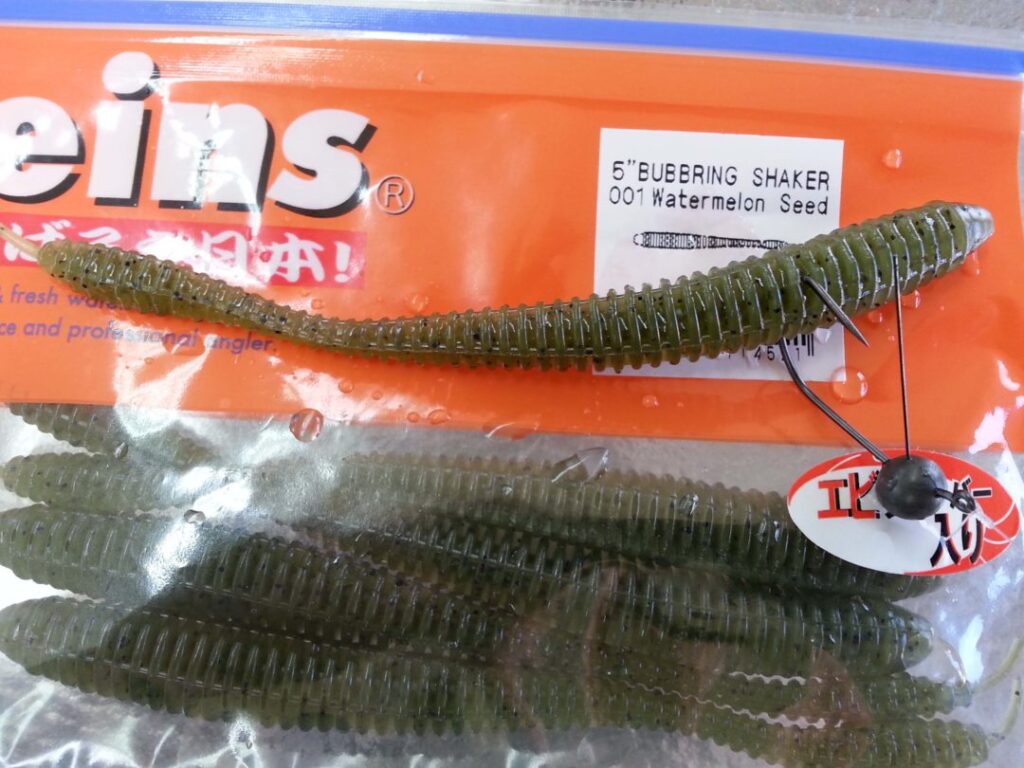
Optimum Victory Tails
The Optimum 5″ and 3” Victory Tails are examples of flat-sided worms that cause side-planing water resistance to propel or “swim” the worm forward as it resists the effect of gravity pulling the jig head down. This style of side-planing worm tends to excel with a fairly steady “swimming” retrieve comprised of a series of soft lift-and-fall rod actions that move it forward.
The sweet spot for great side-planing action is 1-1/4” back on the 5” and ¾” back on the 3” Victory Tail. Insert the point of the hook through the top of the belly slot and out the side on a 90 degree angle at the shoulder color change.This is so the worm is fixed good and tight on the hook and it makes for a better side-planing action.
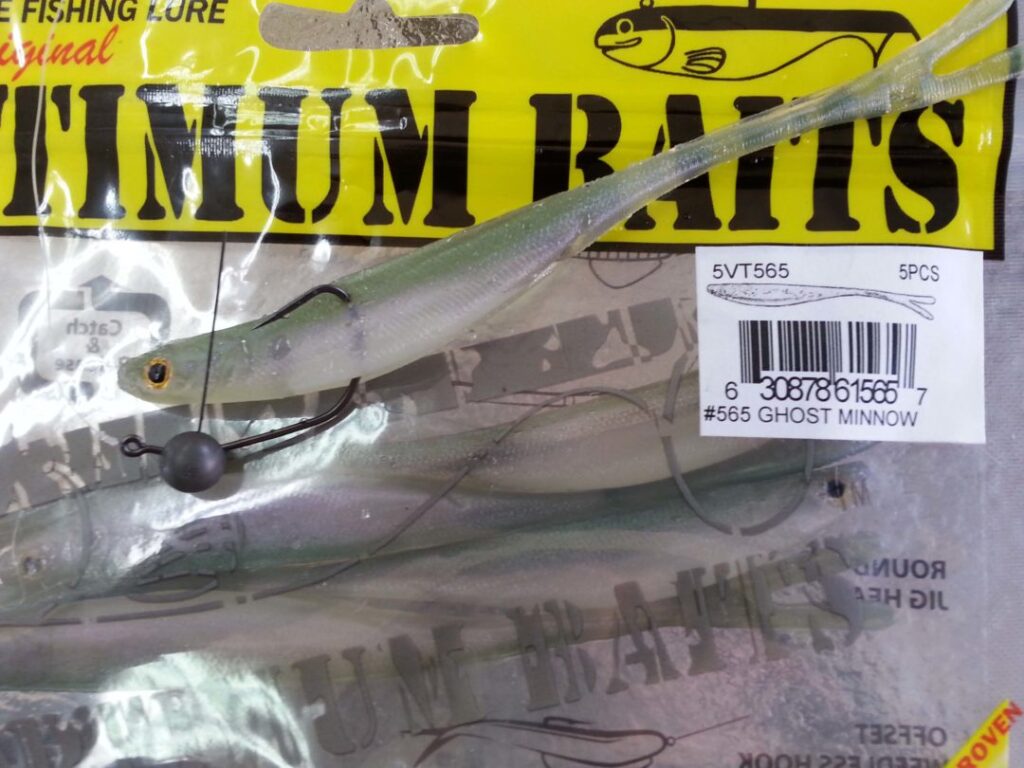
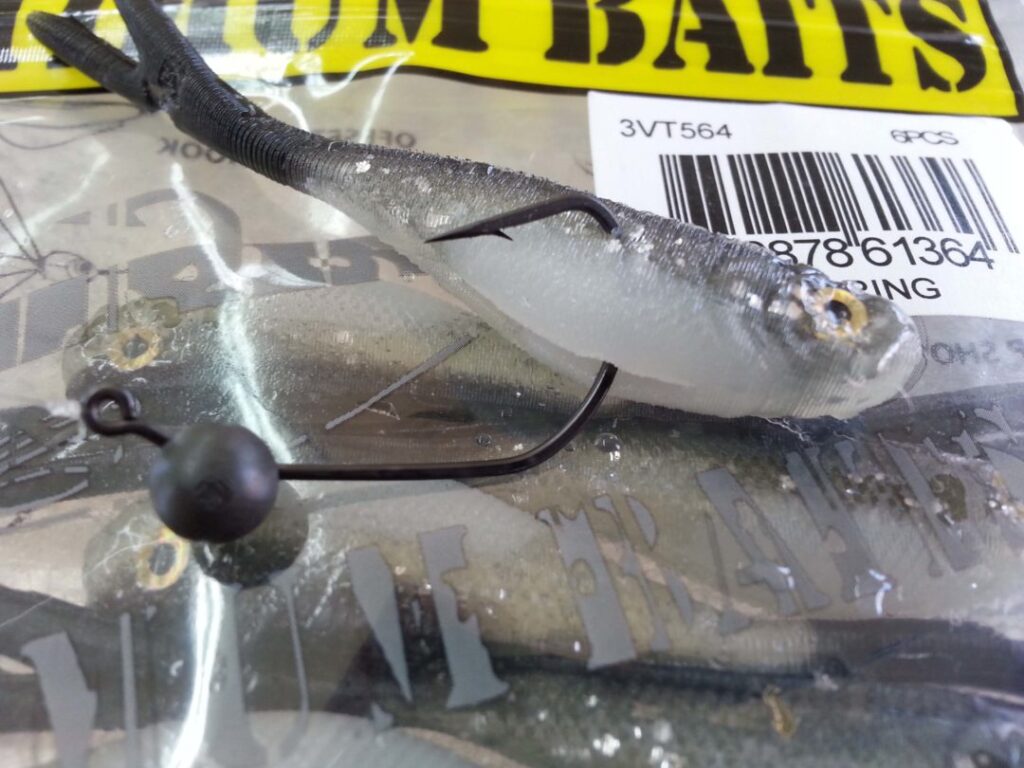
Rod, reel, line
“As with all techniques, the tackle we use plays a huge role in the outcome,” explains Matt Paino our mentor on Zappu’s wacky jig technique.
When using the Zappu wacky jig, use fast tapered rods that are rated for or perform well with high-strength, high quality fluorocarbon line like Sunline Sniper FC in the 5 to 7 lb test range, with 8 being as heavy as you can go because catch rates will drop drastically using heavier line like 10 lb test with this tactic. With heavier fish or thicker cover, 7 is advisable and forgiving. In deeper water or under tougher conditions, use 6 or it can even be critical to drop to 5 pound test to coax more bites.
Matt continues, “The preferences of Japanese anglers tend toward lighter and shorter rods. A popular rod length in Japan is 6 foot because they feel it’s easier to handle lighter worms with a shorter stick. A spinning reel is also the choice for many Japanese anglers who have mastered the Zappu wacky jig.”
For USA anglers, a 6’6” spinning rod with a little more power tends to be the preference, with something like the St. Croix Avid AVS66MHF being an example of a medium heavy rod for this technique.
“When working the rod, it is vital to keep a good rhythm and a constant up and down speed with a 10-11 o’clock tip positioning helping to keep the necessary slack in the line,” says the CEO of Optimum Bait Company.
Action
Matt Paino advises, “You always have to have an image in your head of what you want the Zappu wacky jig head and worm to do. The ideal image you want to see is the ball part of the jighead flip flopping up and down and that’s it. If the jighead is doing that, then the worm will be doing its thing. The great part about this rig is that you can create so much action in the worm and the worm doesn’t even have to be moved much at all. In other words, you can keep the bait exactly where you want it to be and impart action to it while it stays there. In order to do this, there is a secret, and that is keeping a good amount of slack in the line. By keeping slack in the line you can shake your rod constantly to produce the wicked irregular action and still keep your bait exactly where you want it,” reveals Matt.
Deadsticking
“When fishing bottom structure you will want to cast out the Zappu wacky jig and worm, and let it free fall to the bottom,” says Matt. “While the jig falls the weight from the jighead causes the worm to roll back and forth. After it hits the bottom you will want to shake it and continue to wind up slack and then free fall it back to the bottom. The fish will often attack as the bait free falls after you lift it. Remember the jig head is there to swing and to create a gyrating action. With the deadsticking technique, you do not constantly shake the rod tip, but you must shake lightly every several seconds as that will reactivate the swinging of the jig head, thereby reenergizing the squiggling tip action of a deadsticked worm,” advises Matt.
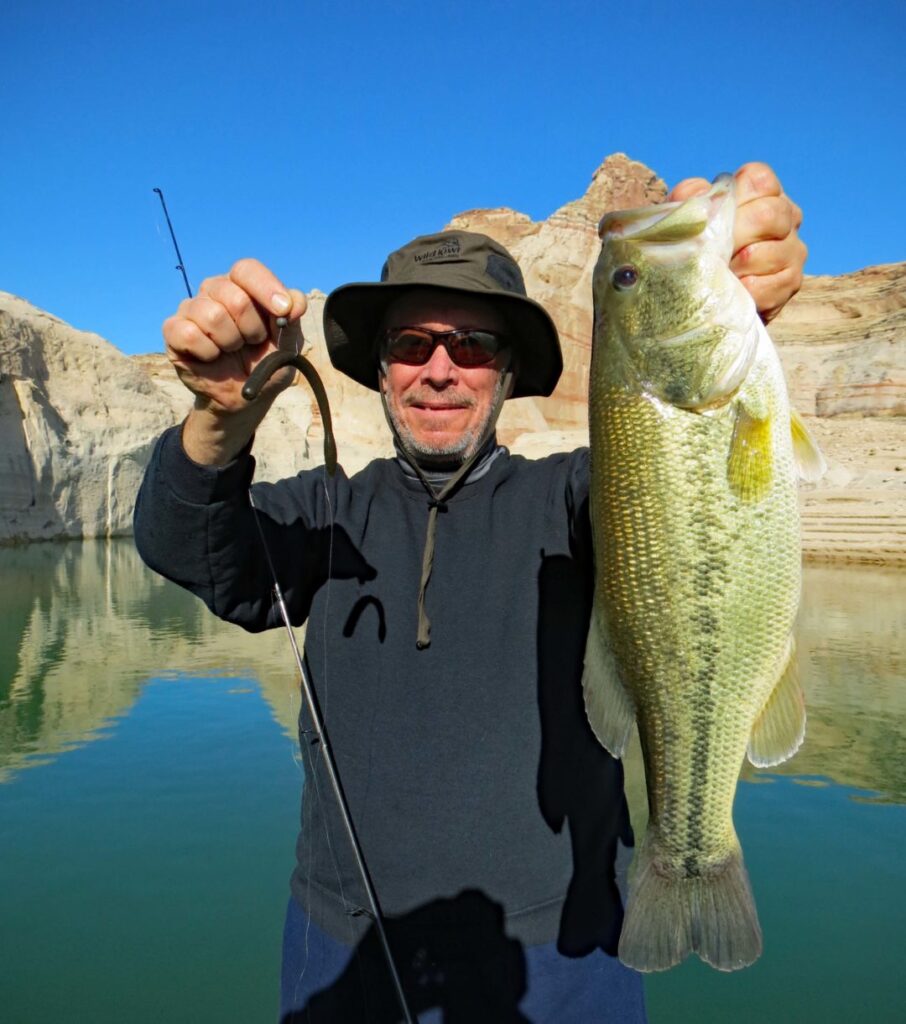
Suspended Fish
“The Zappu wacky jig technique is also very effective on suspended fish in the mid-water zone,” he adds. “The key to working this bait is again the slack in the line. Cast your line out and as you reach the area the fish are suspending in, slowly shake the bait and as you swim the jig and worm back to you. The shaking will create the slack so a steady slow crank will wind in the slack and let the lure do what it’s supposed to do.”
Follow up to double your catch
You can follow up on any missed strike or following fish on any other bait – topwater, jerkbait, crankbait, spinnerbait, swimbait or any lure – by tossing back in with a Zappu wacky jig rod rigged and at the ready. Many days, you will catch as many or more on the Zappu wacky jig follow-up rod than on the primary lure(s) you were using!
Whether you are fishing out of the front or back of the boat, have this follow up rod rigged and ready to go. If you miss a hit, have a follower or chasers or see fish on the graph, reel in whatever other rod and lure ASAP and cast back to where the fish were with the Zappu wacky jig rod. Also as you run across cruising fish or any isolated cover, a bush or rock or anything that looks good for a wacky jig, pick up the wacky jig rod to throw in there.
You don’t need to start out with the wacky jig rod in your hand, but if you follow up every fish or hit this way, you will catch more fish every trip, and dozens even hundreds more each season.
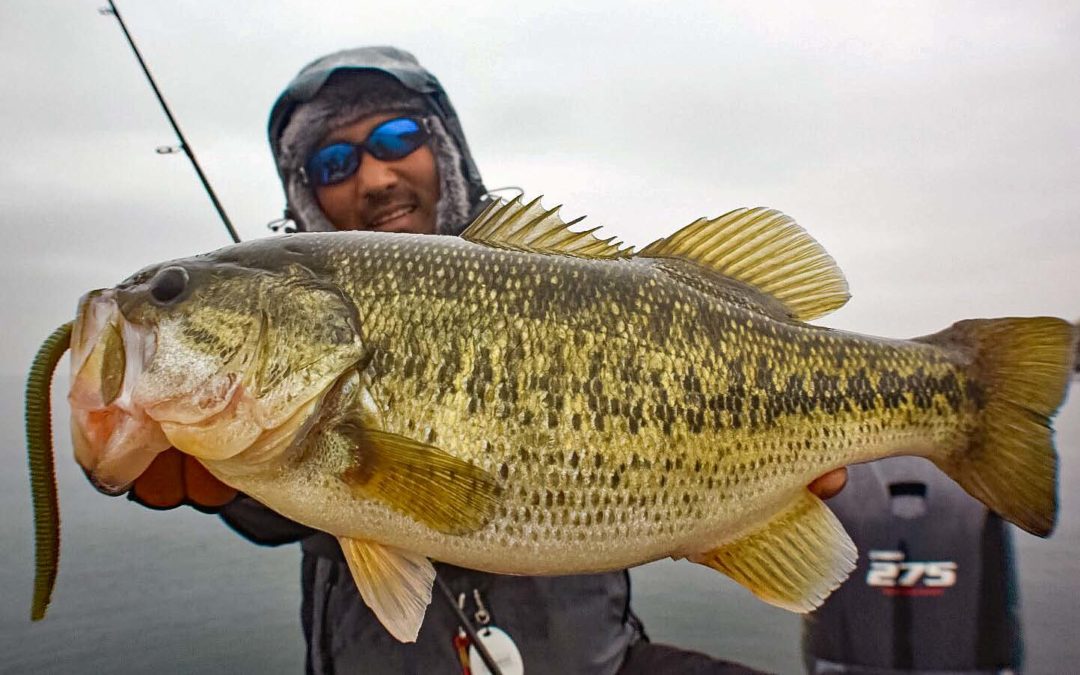
“Many say the reasons the Japanese are constantly developing new lures and techniques like the Zappu wacky jig are because the lakes and ponds are so pressured that the bass in Japan see the same lures and techniques over and over and if the anglers don’t change things up they end up getting blanked. Creating something the bass have never seen before improves the odds of catching fish. Yet the Zappu wacky jig is not only something new, it is something irresistible that Zappu created for posterity. When people ask me what’s the best time of year to fish this way, I tell them, ‘Today is a good day for the Zappu wacky jig.’ I’m not fooling either. You can catch on a Zappu wacky jig from January 1st through December 31st. As long as there’s open water, it’s always effective. No matter where you fish, this will hold true. Now, for those of us anglers who truly believe that there is no wrong way to fish a worm, then the wacky jig from Zappu is the right technique to try the next time – and every time – you’re out on the water,” concludes Matt Paino.



